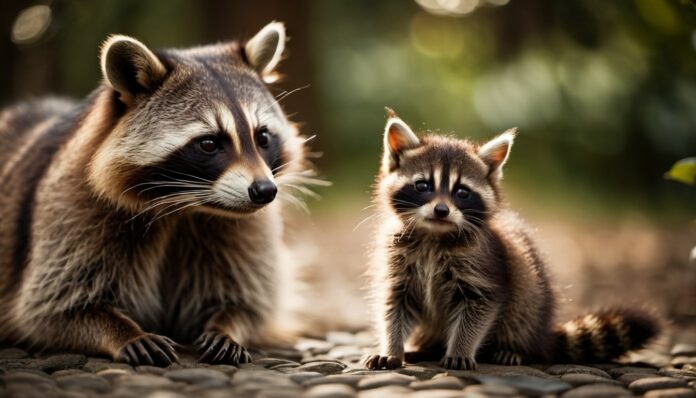Raccoons are small to medium-sized mammals known for their distinctive black “mask” across their eyes and ringed tails. They are incredibly adaptable creatures, often found in both wild and urban environments. Raccoons are known for their intelligence and dexterous front paws, which allow them to manipulate objects and open containers.
Why are They Called Raccoons?
The name “raccoon” originates from the Algonquian word “arakun,” which means “he scratches with his hands.” This name aptly describes the raccoon’s behavior of using its front paws to dig, forage, and investigate its surroundings. The scientific name for the raccoon is Procyon lotor, with “Procyon” meaning “before the dog” and “lotor” meaning “washer,” referring to their habit of “washing” their food.
Interesting Facts About Raccoons
Dexterous Front Paws
Raccoons are known for their nimble front paws, which they use much like humans use their hands. They can open jars, unlatch doors, and even untie knots, making them notorious for breaking into trash cans and other containers.
Night Owls
Raccoons are primarily nocturnal, meaning they are most active at night. Their excellent night vision and acute sense of hearing help them navigate and forage in the dark.
“Washing” Their Food
Raccoons often appear to “wash” their food in water before eating it. This behavior, known as “dousing,” is not fully understood, but it may help them better manipulate and soften their food.
The Largest Raccoon
The largest raccoon ever recorded weighed over 60 pounds! This is much larger than the average raccoon, which typically weighs between 8 to 20 pounds.
Raccoon Prodigy
A raccoon named “Melanie” became famous for solving complex puzzles in a series of experiments. Her intelligence and problem-solving skills were showcased in various documentaries.
Urban Climber
Raccoons are excellent climbers. They can easily scale trees, fences, and even the sides of buildings, making them highly effective at accessing food in urban environments.
Rapid Reproduction
Raccoons have a high reproductive rate. A female raccoon can give birth to 2-7 kits in a single litter, and under favorable conditions, their populations can grow rapidly.
